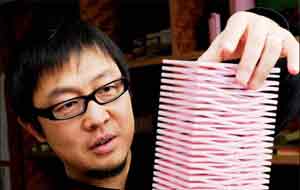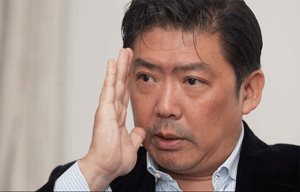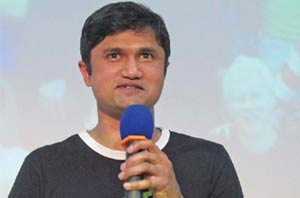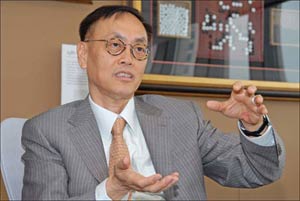Right development path
Updated: 2011-10-17 07:59
By Tung Chee Hwa (China Daily)
|
|||||||||
The central government knows the challenges the country is facing and will try to address them in carrying out the 12th Five-Year Plan
In the 32 years since China's reform and opening-up, a market economy has been introduced and modern infrastructure constructed. The country's 1.3 billion people enjoy much-improved livelihoods and free compulsory nine-year education has been introduced for all school-aged children and healthcare and social security have been made available.
In these 32 years, a closed Chinese society has become open. Indeed, there has been an unprecedented expansion of individual freedoms - freedom of thought, freedom of movement, and freedom to pursue economic opportunity.
The sheer scale of nation building in China is overwhelming. For example, the free and compulsory nine-year education is for a student population of 300 million individuals, equal to the population of the United States. To be sure, much more work still needs to be done, but it is not an exaggeration to say that never before in the history of mankind has so much progress been made for so many people in such a short period of time.
The reason for China's success is because the Chinese people and her leaders have chosen a path of development that suits the country's unique history, cultural values and needs.
Economically, it is about more reform and opening-up, and it is about developing the right mix between the market economy and the planned economy. Politically, it is about developing China's unique form of democracy. Internationally, it is about peaceful development and the building of good relations with other nations around the world.
The unbalanced nature of economic growth over the past 32 years has increased income disparity between the rich and the poor, between urban and rural populations, and between coastal and inland regions. This growth has also created huge environmental challenges. There is an urgent need to address climate change. New drivers of economic growth need to be developed to replace the energy intensive, export and investment driven economy of today.
In March, the nation's 12th Five-Year Plan (2011-2015) was unveiled, outlining the policy priorities, goals and targets for the next five years. Many initiatives were suggested taking into account the challenges that China faces both domestically and internationally.
By improving workers' wages, by improving farmers' incomes, by designing a better social security network, and by an ambitious development plan for the Western region, China will reduce the wealth gap and create an environment for increased domestic spending. More jobs will be created by encouraging the expansion of the service sector and a more modern industrial base will be developed by investment in leading-edge industries.
The rural population, whose livelihood is agriculture, still accounts for almost 55 percent of the total population, or about 700 million people, so urbanization will continue. But in the meantime, the need for rural areas to build infrastructure, to provide better education, social security and healthcare, and to introduce advanced technologies in farming are all pressing tasks that are being addressed.
But despite China's success over the past 32 years, the challenges remain enormous. China is a country with 20 percent of the world's population, but only 7 percent of the world's arable land, and is not rich in natural resources. She needs to create 25 million new jobs every year. With a per capita gross domestic product (GDP) of $4,000 - 100th in the world - China still needs to improve peoples' livelihoods on a massive scale.
In developing democracy, China always puts people at the center of governance, with an emphasis on transparency, accountability, rule of law, and the protection of the legal rights of all her citizens. China's democracy will continue to evolve in her own way, consistent with her own needs. This path of development has been successful and therefore has the support of the people.
To be sure, there are many areas that still need improvement, such as government waste and corruption and the competence of local government officials. But the leadership of the central government has a clear understanding of these needs and they are being tackled.
Since the launch of the reform and opening-up policy, China's interests and those of the world have become more and more intertwined and mutually dependent. China is therefore determined to pursue its path of peaceful development and win-win situations among nations through trade, commerce and investment.
It is very much a part of Chinese culture and values to seek harmony, tolerance, and inclusiveness in personal relationships. This extends to China's approach to dealing with other nations. Specifically, China will seek common ground rather than confrontation, peace rather than war, in working out disputes with other nations.
You may ask then, why is China investing so much in her military? The fact is, China has 14 nations on her border, as well as a long coastline, both of which need to be defended. China is also a major trading nation whose sea lanes need to be protected. Her military expenditure, at approximately 1.5 percent of GDP, is comparatively low by any standard. China's military expenditure is defensive in nature and much of the expenditure is for modernization purposes. Furthermore, China has no overseas military bases.
People ask me, will China ever challenge US's military supremacy? I say, China does not have the capability to do so, China does not have the reason to do so, and China does not have the cultural inclination to do so. The future is full of challenges. But given China's impressive achievements over the last 32 years, I am optimistic of our future.
The author is chairman of the China-United States Exchange Foundation. The article is excerpts of his speech at the Carnegie Endowment for International Peace on Sept 29.
(China Daily 10/17/2011 page8)










